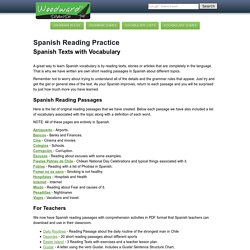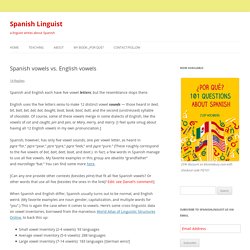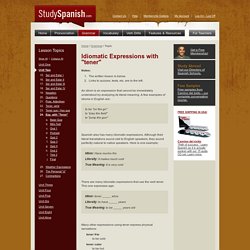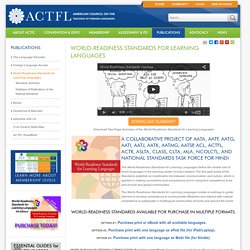Zoom
Trash

Mariah
Really enjoy utilizing social bookmarking to organize my teaching tools!
Spanish Reading Passages for Comprehension - Lecturas en Español. A great way to learn Spanish vocabulary is by reading texts, stories or articles that are completely in the language.

That is why we have written are own short reading passages in Spanish about different topics. Remember not to worry about trying to understand all of the details and the grammar rules that appear. Just try and get the gist or general idea of the text. As your Spanish improves, return to each passage and you will be surprised by just how much more you have learned. Spanish Reading Passages Here is the list of original reading passages that we have created. NOTE: All of these pages are entirely in Spanish. For Teachers We now have Spanish reading passages with comprehension activities in PDF format that Spanish teachers can download and use in their classroom. Reading Passages in Spanish about Special Days of the year Año Nuevo en Chile - A reading passage about celebrating New Year in Valparaíso, Chile. Improve your Spanish with our reading passages. Schoology. Duolingo. Spanish Learning Games for Kids.
Spanish vowels vs. English vowels. Spanish and English each have five vowel letters, but the resemblance stops there.

English uses the five letters aeiou to make 12 distinct vowel sounds — those heard in beet, bit, bait, bet, bat, bot, bought, boat, book, boot, butt, and the second (unstressed) syllable of chocolate. Of course, some of these vowels merge in some dialects of English, like the vowels of cot and caught, pin and pen, or Mary, merry, and marry. [I feel quite smug about having all 12 English vowels in my own pronunciation.] Spanish, however, has only five vowel sounds, one per vowel letter, as heard in para “for,” pera “pear,” pira “pyre,” pora “leek,” and pura “pure.” (These roughly correspond to the five vowels of bot, bait, beet, boat, and boot.) [Can any one provide other contexts (besides pVra) that fit all five Spanish vowels? Word Reference.
Tener Expressions - Quizlet. Idiomatic Expressions with "tener" Home / Grammar / Topic Notes: The written lesson is below.Links to quizzes, tests, etc. are to the left.

An idiom is an expression that cannot be immediately understood by analyzing its literal meaning. A few examples of idioms in English are: to be "on the go" to "play the field" to "jump the gun" Spanish also has many idiomatic expressions. Idiom: Hace mucho frío Literally: It makes much cold True Meaning: It is very cold There are many idiomatic expressions that use the verb tener.
Idiom: tener _____ años Literally: to have _____ years True Meaning: to be _____ years old Many other expressions using tener express physical sensations: tener frío to be cold tener calor to be hot tener hambre to be hungry tener sed to be thirsty tener sueño to be sleepy tener dolor de to hurt or be sore, etc. There are also many idiomatic expressions with tener that express sensations more psychological in nature: Spanish Worksheets & Resources for Teachers and Students.
Portland State Diversity and Multicultural Student Services: Native American Student and Community Center. It’s no secret that urban farms and gardens are core to Portland’s identity as one of the most sustainable cities in the world.

What’s maybe lesser known is that those young patches of kale and cabbage are often entangled in processes of gentrification and displacement. With a $249,978 grant from the National Science Foundation, a binational research team led by Nathan McClintock, Portland State University assistant professor of urban studies and planning, will examine the complex relationship between urban agriculture and gentrification in two ultra-green North American cities: Portland, Oregon, and Vancouver, British Columbia. The three-year study, “Urban agriculture, policy making, and sustainability,” aims to shed light on how urban agriculture policy-making practices both contribute to and resist inequitable access to resources and features that make a neighborhood more sustainable—such as affordable housing, parks, healthy food, and transportation options. neighborhoods.
Spanish spelling errors of emerging bilingual writers in middle s. Spiritual Norms - Tohono O'odham. World-Readiness Standards for Learning Languages. Download Summary Download Two-Page Summary of the World-Readiness Standards for Learning Languages The World-Readiness Standards for Learning Languages define the central role of world languages in the learning career of every student.

The five goal areas of the Standards establish an inextricable link between communication and culture, which is applied in making connections and comparisons and in using this competence to be part of local and global communities. The World-Readiness Standards for Learning Languages create a roadmap to guide learners to develop competence to communicate effectively and interact with cultural competence to participate in multilingual communities at home and around the world. World-Readiness Standards available for purchase in multiple formats. OPTION #1: Purchase print or eBook with all available languages. OPTION #2: Purchase print with one language as ePub file (for iPad/Laptop). OPTION #3: Purchase print with one language as Mobi file (for Kindle).